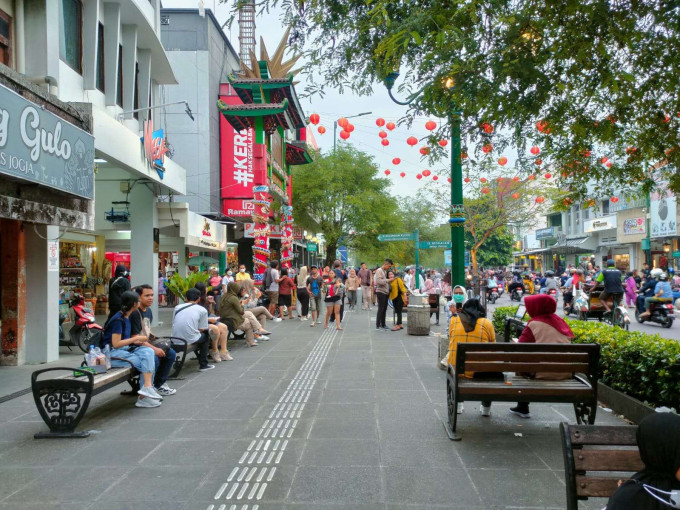
Traffic congestion and air pollution are prevalent issues almost every city faces today.
Some other common transportation problems include dependence on private vehicles, unequal transportation access, lack of public transportation, pedestrian-unfriendly infrastructure, poor road quality, expensive and limited parking, social inequality in transportation access, and urban development not integrated with transportation infrastructure and services.
These issues require a holistic approach to achieve efficiency and sustainability in urban transportation.
To address these problems, cities worldwide must develop sustainable transportation plans, improve public transportation, promote sustainable mobility such as walking and cycling, and prioritize transportation integration in overall urban planning.
Promoting sustainable and comfortable mobility for pedestrians is a crucial element in efforts to create more sustainable cities. Local governments and communities are making various continuous efforts but have yet to see encouraging results.
According to the Head of the UGM Center for Transportation and Logistics Studies, Dr. Ikaputra, one contributing factor is the community’s significant dependence on private vehicles.
Modality integration is essential to address various issues through environmentally friendly and sustainable modes, especially public transportation.
He mentioned that such efforts require support, including the cultural aspect of walking for people’s daily mobility. However, research from Stanford University in 2022 showed that Indonesians were among the least likely to walk.
“The study mentioned that, on average, Indonesians walk only 3,513 steps per day–almost half of Hong Kong’s people ranked first as the most diligent walkers,” said Dr. Ikaputra during a seminar on Pedestrian and Public Transportation Culture in Yogyakarta.
“The average person in Hong Kong walks 6,880 steps or 6 km per day, followed by China with an average of 6,189 steps per day, Ukraine 6,107 steps, Japan 6,010 steps, and Russia 5,969.”
The UGM Center for Transportation and Logistics Studies organized the seminar in collaboration with the Indonesian Transportation Society (MTI) and the Teladan Alumni Corps of Yogyakarta (KATY).
Besides Dr. Ikaputra, Muslich Zainal Asikin, the Chair of MTI in Yogyakarta, and Dr. Kuncoro Cahyo Aji, an expert staff of the Yogyakarta Governor for Economic and Development Affairs, were present at the seminar.
The event featured several speakers and respondents, including the Head of the Yogyakarta Public Housing Agency, the Acting Head of the Yogyakarta Transportation Agency, and representatives from GoTo. Deni Prasetio Nugroho, a researcher at Pustral UGM, facilitated the discussion.
Dr. Ikaputra discussed the current condition of pedestrian lanes for public transportation users in Yogyakarta. As an icon, Yogyakarta should encourage the transportation ecosystem to be an intercultural interaction hub accommodating the city’s uniqueness.
Hari Setyowacono shared efforts made by the Yogyakarta Public Housing Agency, especially in improving pedestrian safety in Yogyakarta. These efforts include sidewalk revitalization in several locations, including the Tugu area, Perwakilan Street, Sudirman Street, and Senopati Street.
“At present, 79.8% of the sidewalk length covers the entire length of the roads in Yogyakarta. Routine maintenance carried out on sidewalks in Yogyakarta is the agency’s support for pedestrians in Yogyakarta,” Setyowacono said.
Sumariyoto believes that public transportation is crucial in achieving sustainable mobility in Yogyakarta. Several programs were carried out by the Yogyakarta Transportation Agency from 2022 to 2027, such as the trial of the TransJogja contra-flow project, the electric bus project, and the alternative-powered pedicab project.
Hendra Prakosa Saragih emphasized the importance of sustainable mobility by looking at the success story of Go Transit in Jabodetabek, which is planned to be implemented in other cities in Indonesia.
He mentioned that the Go Transit service is an effort to realize sustainable mobility and support mode integration.
Eko Suryo Maharsono discussed the cultural aspect, stating that pedestrian areas should foster social interaction. In Javanese, it is referred to as a medium for “srawung,” allowing pedestrian areas to be designed as comfortably as possible for pedestrians to discuss, meet, and communicate.
“For instance, pedestrian areas are designed as meeting places with comfortable seating. I think Malioboro can be used as an example of a comfortable pedestrian area,” Maharsono said.
Abiyyi Rahman Hakim, representing the Pedestrian Community of Yogyakarta, expressed the community’s desire for improvements to support pedestrian comfort. Some desired improvements include arranging electric poles and integrating stop points with pedestrian routes.
Author: Agung Nugroho
Photo: RRI

